Rani Abbakka:
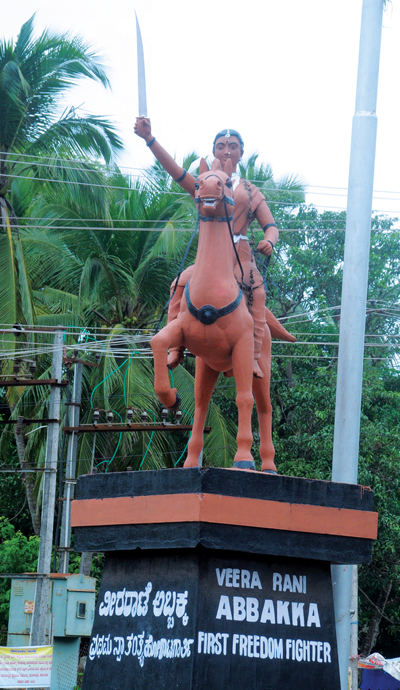 Historians differ in their opinion as far as tracing the Indian independence struggle in coastal districts of Dakshina Kannada, Udupi and Uttara Kannada is concerned. A group of historians say that it was only after the formation of the Indian National Congress did the concept of ‘nationalism’ and fighting for ‘one free India’ came into being. Prior to this mass nationalist movement, the instances of revolt against the colonial powers by kings and queens should be considered as battles fought by them to safeguard their respective kingdoms just as they would fight the neighbouring kings. Some other historians feel that the opposition shown to colonial powers by Indian kings and queens is also a part of the freedom struggle. It is in this view that Rani Abbakka of Ullal comes across as one of the first fighters from the coastal region to have raised her sword against the colonial occupation.
Historians differ in their opinion as far as tracing the Indian independence struggle in coastal districts of Dakshina Kannada, Udupi and Uttara Kannada is concerned. A group of historians say that it was only after the formation of the Indian National Congress did the concept of ‘nationalism’ and fighting for ‘one free India’ came into being. Prior to this mass nationalist movement, the instances of revolt against the colonial powers by kings and queens should be considered as battles fought by them to safeguard their respective kingdoms just as they would fight the neighbouring kings. Some other historians feel that the opposition shown to colonial powers by Indian kings and queens is also a part of the freedom struggle. It is in this view that Rani Abbakka of Ullal comes across as one of the first fighters from the coastal region to have raised her sword against the colonial occupation. Abbakka Rani fought the Portugese in the late 16th century. The Portugese who had already made Goa their base, moved down south to Mangalore. Since the coastal city of Mangalore and Ullal provided a good base for spice trade, the Portugese wanted to have the area under their control. But they found resistance in Rani Abbakka who did not want the colonial power to take control of the local trade. Rani Abbakka showed exemplary courage and stomach for fight when the city of Ullal was captured by an army of soldiers sent by Portuguese Viceroy António Noronha. Abbakka Rani managed to escape and took refuge in a mosque and the very same night, launched a counter attack on the Portuguese, even killing General Peixoto the Portugese General, thereby affecting a retreat. Abbakka later lost battles to the Portugese as her husband sided with them and died revolting in the prison. Says Dr. Lokesh K M, Associate Professor, Department of History, Mangalore University: “That she took on the Portugese who had a really strong navy, with her little country boats and soldiers, was indeed brave of her”.
Tipu Sultan and Mangalore:
The British considered Tipu Sultan, popularly known as the ‘Tiger of Mysore’, as one of their biggest threats in South India. His father Haider Ali had already taken them on. Tipu carried the struggle forward after the death of Haider Ali and his having the upper hand against the British in the second Anglo-Mysore war elevated him to a higher level in historic circles. Mangalore happens to be a significant witness of this development as the war ended with the ‘Treaty of Mangalore’.

In 1799, Tipu died fighting the British in the fourth Anglo-Mysore war at Srirangapatna. After his death, the British handed over Mysore to the Wodeyars but kept possession of Mangalore. “The British wanted to retain Mangalore as it was more than beneficial for them as a port base for trade and also a vital link between Bombay and Madras. If you observe, the British had control of all the ports along the coast whether it was Karwar, Mangalore or Kasaragod”, says Dr. Lokesh.
Canara-Coorg rebellion (Amara Sullia Dange):
In the early 1800s, we find a rebellion against the British from the peasant class of Dakshina Kannada and Kodagu region combined. “After taking control of the coastal region following the death of Tipu Sultan, the British restructured the land revenue system. They were keen on cash payment of revenue. In 1830, there was a sort of depression state in the region and prices of agricultural produce dropped. This led to farmer associations of Sullia, Puttur and Coorg coming together to revolt against the British. These revolts are also known as ‘Koot’ rebellions. Kalyanappa of Coorg came to Mangalore to challenge the British but he eventually failed. Basically the effect of this rebellion felt in Dakshina Kannada was a spillover of a movement in Coorg”, says Dr. B Surendra Rao, former Professor of History, Mangalore University.
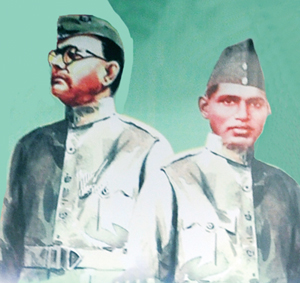 Barrister Attavara Yellappa was the close associate of Netaji Subhashchandra Bose and was a forerunner in the creation of Azad Hind Bank, which was collecting donations for carrying out India’s freedom struggle in Hong Kong, Myanmar, Singapore and other countries.
Barrister Attavara Yellappa was the close associate of Netaji Subhashchandra Bose and was a forerunner in the creation of Azad Hind Bank, which was collecting donations for carrying out India’s freedom struggle in Hong Kong, Myanmar, Singapore and other countries. Hundreds of Mangaloreans pass by the popular K S Rao road in the city every day. But not many are aware of the legacy of the man after whom the road has been named. Karnad Sadashiva Rao is looked at as the most influential Gandhian leader of the coastal region. “Thanks to K S Rao, more and more people of the coastal region involved themselves in non-violent fight against the British”, says Dr. Kumaraswamy.
Hundreds of Mangaloreans pass by the popular K S Rao road in the city every day. But not many are aware of the legacy of the man after whom the road has been named. Karnad Sadashiva Rao is looked at as the most influential Gandhian leader of the coastal region. “Thanks to K S Rao, more and more people of the coastal region involved themselves in non-violent fight against the British”, says Dr. Kumaraswamy.A leader who grew under the shadow and inspiration of Karnad Sadashiva Rao, M G Haider of Ullal is also remembered for his active participation in the Gandhian movement.
Karnad Sadashiva Rao had made M G Haider the in-charge of ‘Khadi Bhandar’ in Mangalore. According to records, when floods broke out in the region, M G Haider, as per the directive of K S Rao, had actively engaged in mass preparation and distribution of Khadi clothes to the flood victims.
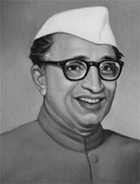 Joachim Alva hailed from a Catholic family in Belle in Udupi district. In 1930, Alva had founded the Nationalist Christian Party with the goal of drawing the Christian community into the freedom struggle.
Joachim Alva hailed from a Catholic family in Belle in Udupi district. In 1930, Alva had founded the Nationalist Christian Party with the goal of drawing the Christian community into the freedom struggle. Narayana Shetty Kille of Kulur Hosamane was working in the postal department in Mumbai. In 1920-21, on Gandhiji’s call, he quit the job and came back to Mangalore to participate in the civil disobedience movement. In 1930, he was put behind bars for a year for participating in ‘Salt Satyagraha’. Later, owing to the Gandhi-Irwin pact, he was released.
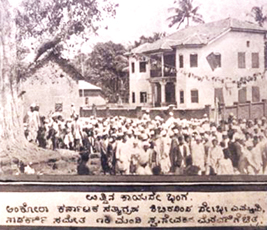 Gandhiji’s ‘Salt Satyagraha’ is considered as one of the landmark events in Indian independence history. In the coastal region, Ankola of Uttara Kannada district is one place where this movement had a tremendous impact.
Gandhiji’s ‘Salt Satyagraha’ is considered as one of the landmark events in Indian independence history. In the coastal region, Ankola of Uttara Kannada district is one place where this movement had a tremendous impact. B V Kakkilaya hailed from a prestigious family from Bevinje in Kasargod district. He joined St Aloysius College in the year 1937 for intermediate studies. He became an active member of the student movement against the British rule. He joined All India Students’ Federation to voice his indignation. He also showed his patriotism and humanism by serving selflessly in the flood-affected areas during his college days.
 Kakkilaya was keen about upliftment of the poor and backward communities of Dakshina Kannada. During the freedom struggle, he was the voice of coastal Karnataka. He spent around six years as a prisoner in various jails in Cannanore, Vellore, Bangalore, Ranebennur, Dharwad and Kadalur.
Kakkilaya was keen about upliftment of the poor and backward communities of Dakshina Kannada. During the freedom struggle, he was the voice of coastal Karnataka. He spent around six years as a prisoner in various jails in Cannanore, Vellore, Bangalore, Ranebennur, Dharwad and Kadalur.After the formation of Indian National Congress, many national icons came down to Mangalore to provide momentum to the national movement in the coastal region. “The likes of Mahatma Gandhi, Jawaharlal Nehru and others concentrated a lot on Mangalore as they realized that the scope for freedom movement to grow in Mangalore was more in Karnataka when compared to Mysore, as Mysore was still ruled by Wodeyars and the people were largely happy with the king’s rule, although the British were the ultimate masters. That is why you find Mahatma Gandhi visiting Mangalore two to three times. In those days, Sarojini Naidu would accompany Gandhiji wherever he went and therefore, she happened to come to Mangalore too. On one occasion, it is said Gandhiji sat at a place at Bawtagudda and enjoyed the sight of the sunset there. The Nehru Maidan of today is called so because Jawaharlal Nehru had given a speech there. Rabindranath Tagore too had come to Mangalore and this very monument (Government College) is a witness to that visit of his. Our auditorium has been named ‘Ravindra Kala Bhavana’ also in the memory of his visit”, says Dr. Kumaraswamy.
Mangalore had been an educational hub back then too and this contributed in the growth of nationalist thinking in the region. “To be honest the Dakshina Kannada and Udupi districts do not have anything fascinatingly heroic to boast about as far as freedom struggle is concerned. Barring a few peasant revolts here and there and a lathi charge in Mangalore during the Quit India movement, we do not possess something very heroic that had taken place in our region compared to other parts of the country or even Karnataka. However, Mangalore being an educational hub, did contribute in the growth of nationalist movement to some extent. The Basel Mission had established schools here. St Aloysius College was there. The Government College had already come up. There were other educational institutions too. In all, Mangalore was a centre of education. The more people got educated, the more it helped them read about the various movements and it also helped migration. Majority of the ones who took to nationalist movements are people who obtained English education. The Bunts Hostel in Mangalore was established with nationalist feelings, with an objective that the Mangalorean community must march forward in education’, says Dr. Surendra Rao.
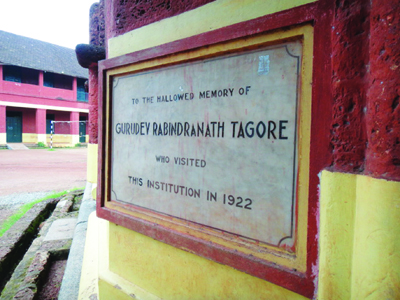 Traces of some indirect connections to national movements are also found. “Mangalore had branches of Annie Besant’s Theosophical Society, the Brahma Samaj, and the Arya Samaj. A candidate from the Justice Party had also contested from Mangalore at that time. The Justice Party was a Dravidian movement or so to say a non-Brahmin movement which was unhappy with Brahmins (Aryans) dominating in government jobs although they were less in number. The communist movement was also there in a smaller scale which was basically a spillover of the communist impact in Kerala” says Dr. Rao.
Traces of some indirect connections to national movements are also found. “Mangalore had branches of Annie Besant’s Theosophical Society, the Brahma Samaj, and the Arya Samaj. A candidate from the Justice Party had also contested from Mangalore at that time. The Justice Party was a Dravidian movement or so to say a non-Brahmin movement which was unhappy with Brahmins (Aryans) dominating in government jobs although they were less in number. The communist movement was also there in a smaller scale which was basically a spillover of the communist impact in Kerala” says Dr. Rao.





Comments
Add new comment